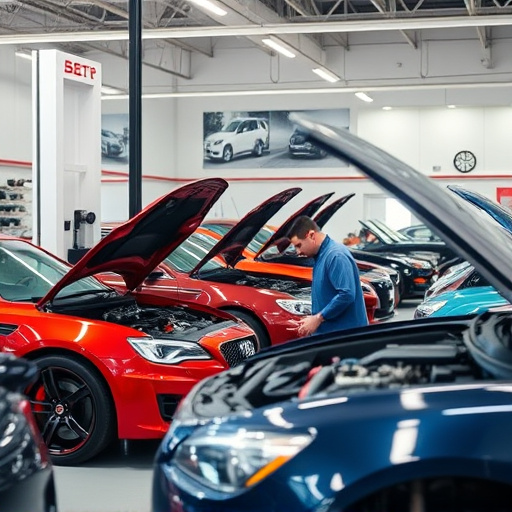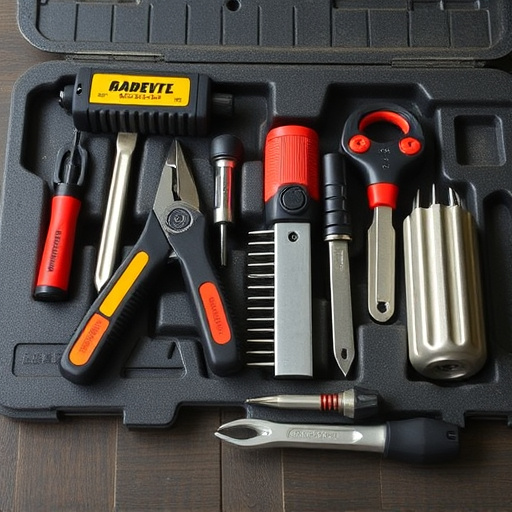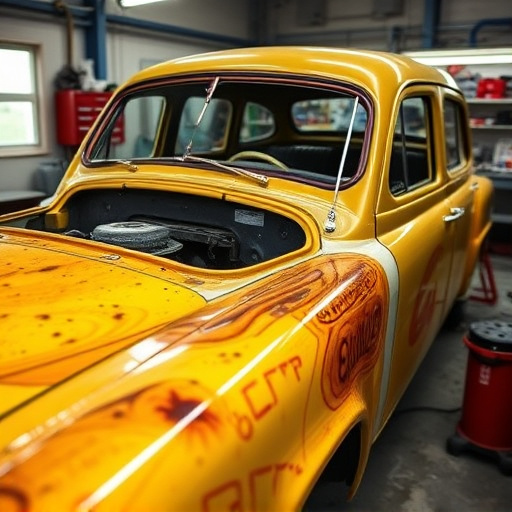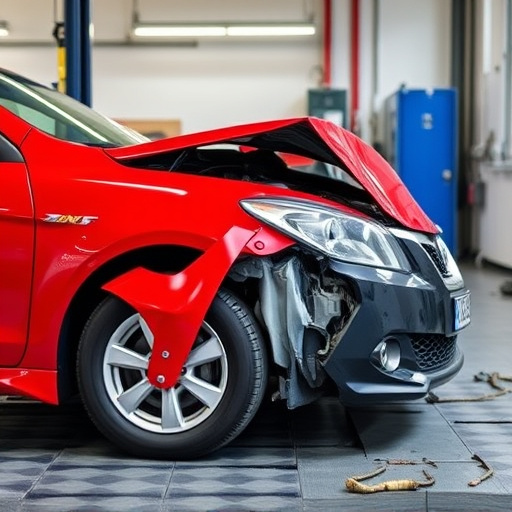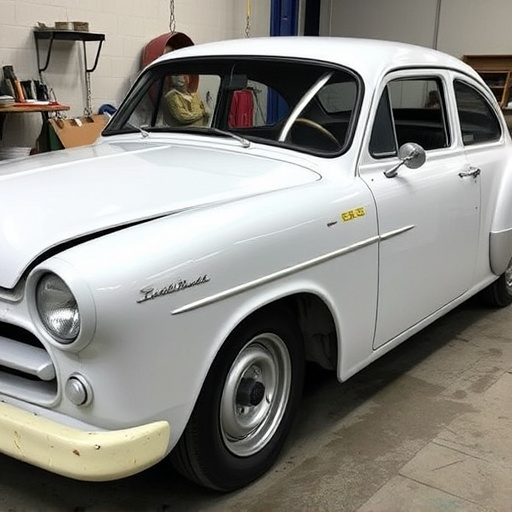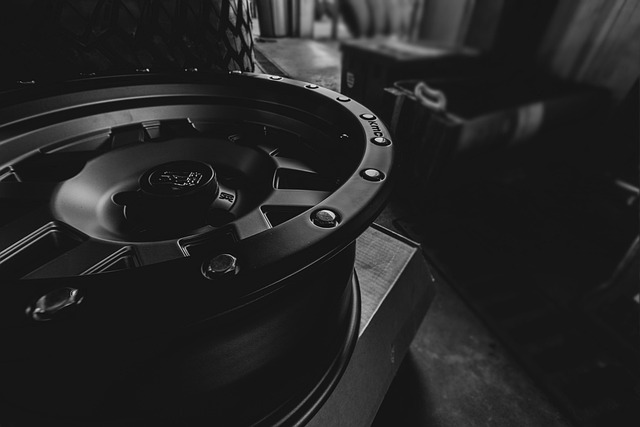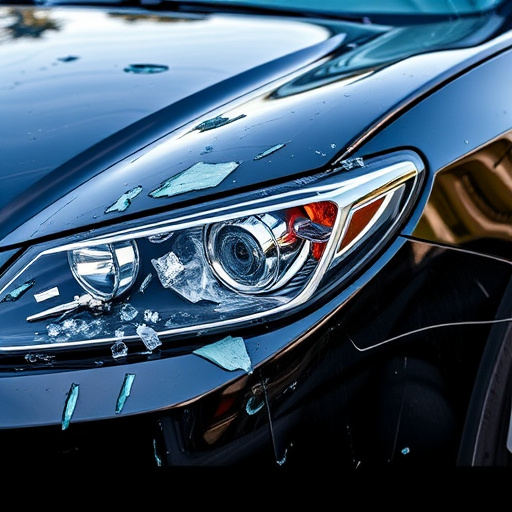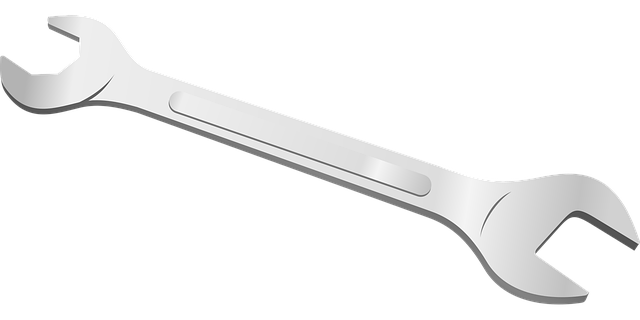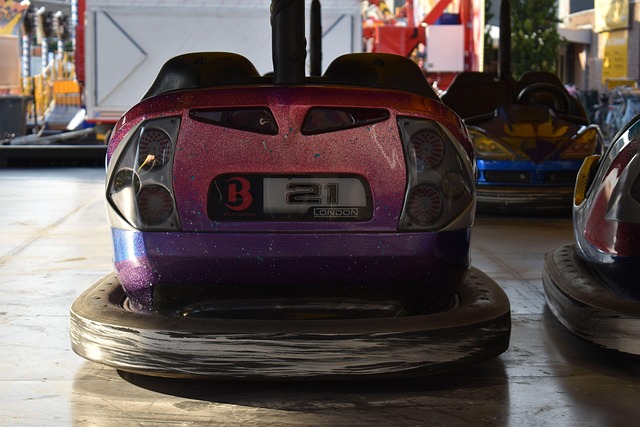Vehicle manufacturers are leading the way in ADAS development, investing heavily in research & collaboration for features like adaptive cruise control and collision avoidance. As ADAS integration evolves, specialized recalibration tools become essential for ensuring safety, performance, and reliability. Automotive body shops must adapt to industry standards by investing in state-of-the-art ADAS recalibration equipment and following manufacturer guidelines to manage complex tasks, enhance customer satisfaction, and minimize post-repair malfunctions.
Vehicle manufacturers play a pivotal role in shaping the landscape of Advanced Driver Assistance Systems (ADAS) development and calibration. As these systems become increasingly integrated into modern vehicles, understanding their influence on ADAS recalibration equipment needs is essential. This article explores how manufacturers’ decisions drive the requirements for recalibration equipment, offering strategies to ensure effective and efficient ADAS recalibration in response to these influences. Key topics include the manufacturer’s role, impacting equipment needs, and best practices for optimal recalibration.
- The Role of Vehicle Manufacturers in ADAS Development and Calibration
- Understanding the Impact on Recalibration Equipment Requirements
- Strategies for Effective ADAS Recalibration in Response to Manufacturer Influences
The Role of Vehicle Manufacturers in ADAS Development and Calibration

Vehicle manufacturers play a pivotal role in shaping the landscape of Advanced Driver-Assistance Systems (ADAS) and their subsequent calibration requirements. As ADAS technology becomes increasingly integrated into modern vehicles, these manufacturers are at the forefront of developing and refining these systems to ensure optimal safety and performance. They invest heavily in research and development to create cutting-edge features like adaptive cruise control, lane-keeping assist, and collision avoidance systems.
In the process of ADAS development, manufacturers collaborate closely with industry experts and researchers to establish precise calibration protocols. This involves creating detailed standards and guidelines for testing and fine-tuning these systems to ensure they function accurately under various driving conditions. Furthermore, vehicle makers often provide specialized tools and equipment, such as advanced simulation software and sensor calibration devices, to support the accurate recalibration of ADAS components after any modifications or repairs, ensuring the safety and reliability of the vehicles in their post-collision state, requiring a meticulous car restoration process, and aligning with industry standards.
Understanding the Impact on Recalibration Equipment Requirements

As vehicle manufacturers continue to integrate Advanced Driver Assistance Systems (ADAS) into their models, the landscape of recalibration equipment needs is evolving rapidly. ADAS technologies like adaptive cruise control, lane keeping assist, and automatic emergency braking rely on precise sensor calibration for optimal performance. Any discrepancies or malfunctions require immediate recalibration using specialized equipment tailored to each vehicle’s unique systems.
This shift towards sophisticated ADAS features has a direct impact on the requirements for ADAS recalibration equipment. Manufacturers must ensure their tools can handle the increasing complexity of these systems, offering both high precision and adaptability. Consequently, the demand for advanced recalibration solutions that cater to diverse vehicle architectures and safety standards is on the rise. This includes sophisticated diagnostic tools capable of identifying issues within individual sensors or components, as well as automated recalibration processes that minimize downtime and maximize efficiency in auto body restoration and tire services.
Strategies for Effective ADAS Recalibration in Response to Manufacturer Influences

Effective ADAS recalibration strategies require automotive body shops to stay agile and adaptable in response to manufacturer influences. Vehicle manufacturers often provide specific guidelines and equipment requirements for ADAS recalibration, which must be followed precisely to ensure safety and system accuracy. To remain competitive, automotive collision repair centers should invest in state-of-the-art ADAS recalibration equipment capable of handling the latest technologies, such as advanced driver-assistance systems (ADAS) sensors, cameras, and software updates.
By keeping their practices aligned with manufacturer recommendations and continuously updating their tools to meet evolving industry standards, these shops can confidently manage complex recalibration tasks for various vehicle models. This proactive approach not only guarantees optimal system performance but also enhances customer satisfaction by reducing the risk of ADAS malfunctions post-repair or reconstruction of vehicle body repair.
Vehicle manufacturers play a pivotal role in shaping the landscape of Advanced Driver-Assistance Systems (ADAS) and, consequently, the needs for ADAS recalibration equipment. As these manufacturers continue to innovate and refine their technologies, understanding their influence on calibration requirements is essential. By adopting strategic approaches that consider manufacturer inputs, industry professionals can ensure effective ADAS recalibration, ultimately contributing to safer and more efficient autonomous driving experiences.

